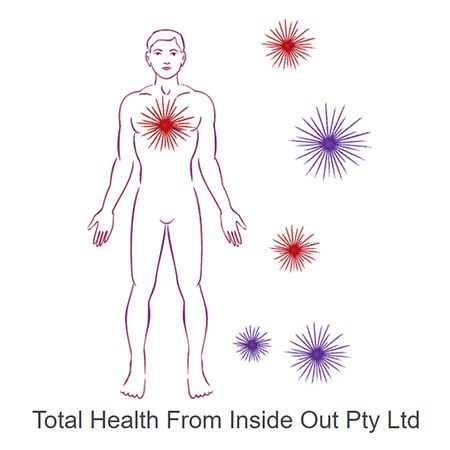
Apart from the ones that you have to untangle from your hairbrush, the clumps of hair clogging the shower drain and strewn on your living room couch and pillows can be a sign of a health problem. Growing up, we've all been told that it's normal to shed up to 100 strands of hair per day. However, nobody explained what shedding more than this number could mean for our health. So, this guide takes you through the causes, symptoms and common types of hair loss, and what you can do about it.
What is the Difference Between Normal and Abnormal Hair Loss?
Hair shedding is a normal thing we all experience every day. Some strands fall out as our hair follicles produce new ones. This process shouldn't cause baldness as new hair takes the place of the ones that shed. However, if you're experiencing excessive hair loss, and some areas of your scalp become noticeably visible, you might have alopecia, an autoimmune disorder that causes patchy hair loss on your head.
Hair growth goes through three stages, even for hairs that grow on other skin surfaces besides the scalp. However, the growth cycle of body hair, as well as facial hair, is shorter because these hairs don't grow as long as scalp hair.
Anagen Phase
This refers to the growth phase of hair and usually lasts from two to seven years. Ninety percent of the hair on your scalp are in this phase as they continue to grow and thicken up to a certain time.
Catagen Phase
The catagen stage is the transitional phase that begins where the anagen ends. Here, the hair follicle shrinks and the growth of hair slows down. This phase lasts about two to three weeks.
Telogen Phase
This is the third and final stage where hair sheds naturally as the hair follicles create new ones.
What Causes Hair Loss?
There are different contributing factors to hair loss. While the excessive use of flat irons and hair spray and wearing of tight ponytails are believed to be the common reasons for hair loss, health experts also attribute the condition to genetics, stress, certain medications and vitamin deficiencies.
Genes
Hereditary hair loss is common. If you have family members who gradually lost their hair as they aged, chances are you're likely to experience permanent hair loss. People with thin hair or a high hairline should check if they have a family history of female or male pattern baldness.
Stress
Stress may cause temporary hair loss as it prematurely ends the anagen phase. Psychological stress, which is as bad as physical stress, can cause gradual hair loss in less than three months.
Autoimmune Disease
People suffering from an autoimmune condition are at risk of developing alopecia areata, a common type of hair loss which may lead to complete baldness. The immune system of a person with an autoimmune disorder attacks the cells of the hair follicle, hence preventing hair growth.
Nutritional Deficiencies
A diet that's low in protein deprives the body of vitamin B12 and causes hair loss.
Hormonal Imbalances
Besides causing extreme stress, which could lead to a host of medical conditions such as thyroid disorder, polycystic ovary syndrome and iron deficiency anemia, among others, unregulated hormone levels can lead to loss of hair as well.
Prescription Medications
Several types of drugs, including birth control pills, blood thinners, chemotherapy drugs, retinoids and antidepressants, among others, can affect the hair roots and disrupt the hair growth cycle.
Childbirth
New mums may shed handfuls of hair after giving birth. This is called postpartum hair loss which is caused by a significant drop in estrogen levels. However, this is no cause for alarm as it's a temporary phase in a woman's life that goes away before their baby turns one. If this doesn't happen, it's best to seek medical advice immediately.
Fungal Infections
What may seem like dandruff might actually be a ringworm. Scalp infections like this affect the hair shaft, causing it to break off easily and leave bald patches on the head. People with skin conditions have an increased risk of excessive shedding.
Radiation Therapy
Radiation therapy may treat brain tumours, but it comes with numerous side effects, including memory and hair loss. High doses of radiation can damage the hair cells and lead to complete hair loss.
What are the Types of Hair Loss?
There are three general types of hair loss that can affect men and women but are more common in the latter. They may be caused by internal or external factors.
Anagen Effluvium
This is a form of hair loss caused by cancer treatments like chemotherapy. It causes hair breakage during the anagen phase, causing severe hair loss.
Telogen Effluvium
Another form of female hair loss, telogen effluvium is characterised by the thinning of hair in one area or the entire scalp. It is caused by major surgery, childbirth, medications or environmental stressors.
Androgenetic Alopecia
Also known as female pattern hair loss, androgenetic alopecia is the most common form of hair loss in women that occurs due to low amounts of male hormones, which shorten the life of hair follicles. When it occurs in men, it's called male pattern hair loss and characterised by bald spots in the crown area of their head. Other types of alopecia include:
- Traction alopecia is one of the common forms of alopecia caused by pulling of the hair follicles through tight hairstyles like ponytails and braids.
- Cicatricial alopecia is also known as scarring alopecia, a group of hair loss disorders that damage the hair follicles and leave a scar on the head.
- Alopecia diffusa, or diffuse hair loss, is a common condition that occurs when the hair follicles die in the anagen phase due to several factors, including iron deficiency, emotional stress, pregnancy, liver disease or menopause.
What are the Symptoms of Hair Loss?
The symptoms of hair loss are just as many as the ways to ensure healthy hair growth. Listing them would be difficult as some people may have more symptoms while others may have fewer. Here below we list the most common ones that may affect only the scalp or the entire body.
- Gradual thinning of hair
- Patches of hair loss
- Itchy scalp
- Sudden hair loss
- Loss of body hair
How is Hair Loss Diagnosed and Treated?
To determine what's causing your excessive shedding, your doctor will perform a physical examination on you and conduct a series of tests, which may include blood tests, scalp biopsy, pull test and dermoscopy, to name a few. The purpose of these tests is to rule out any possible health condition that may be linked to your noticeable hair loss.
Once they have identified the nature of your condition, they will be able to prescribe the appropriate medical treatment for hair loss. They may prescribe an oral medication or recommend a surgical procedure such as scalp reduction, which usually precedes hair transplant surgery.
Hair loss is treatable, especially when it's underlying cause has been identified during its early stages. Shifting to a balanced diet, reducing your stress levels and increasing your body's iron levels to support the oxygenation of its tissues is worth including in your treatment for hair loss. What's more, you can discuss some natural treatments for hair loss with your doctor to alleviate the side effects of conventional drugs. You may also want to get in touch with a natural health practitioner in your local area who specialises in hair loss treatments. Feel free to check out the Natural Therapy Pages' comprehensive list of qualified practitioners.









